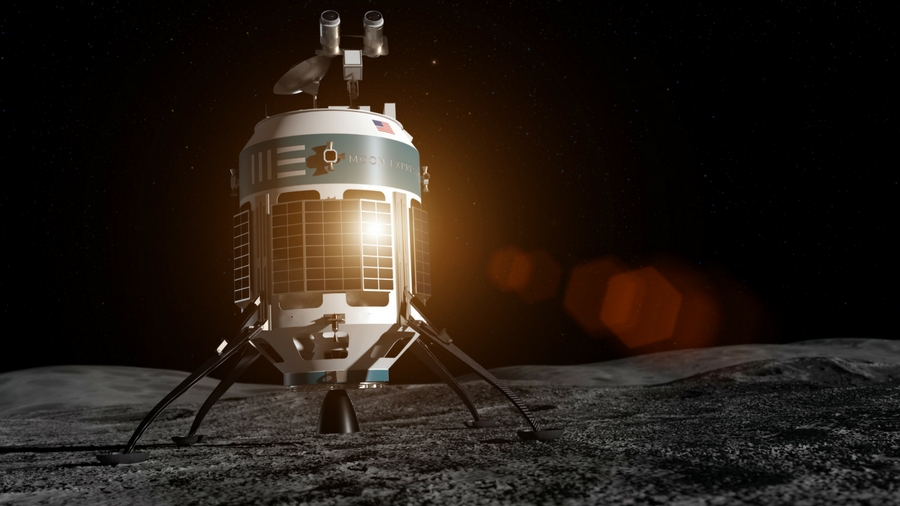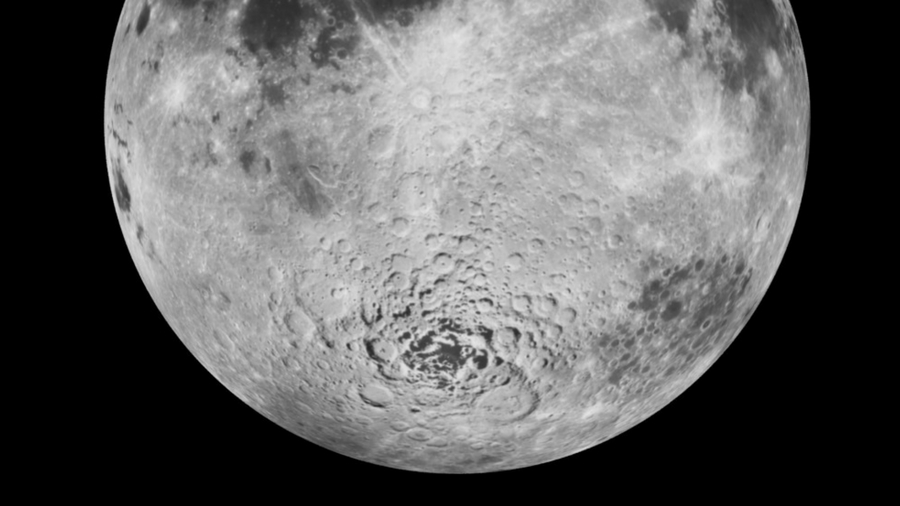10 events that will shape the new space race
The next couple of years promise to be captivating for space fans

The new space race
The new space race is about Hollywood actors going into orbit for five minutes for a million dollars, right? Wrong. Space tourism might grab the headlines, but it's just the fluff. It's the space industry happily taking money off millionaires while its launch and landing tech gets proven, and a few satellites are launched while no-one's looking.
Space tourism will be a driver for innovation, cost-reduction and initial profits, but what most space industry companies are really interested in what happens next. That includes mining the Moon and asteroids for precious resources lacking on Earth, and generally building infrastructure in space to bring the cost down of doing business in space.
This is about so much more than the rich elite going on sub-orbital trips; this is about man reaching out to space for new sources of energy so human civilisation can continue to flourish. This is about survival. The next 12 months or so will see some key steps taken that will take the space industry from a potential new growth area to a bona fide boomtown.

1. Space X tests it Falcon Heavy
After working wonders over the last few years by figuring out how to launch a rocket and then bring back the expensive first stage to be reused, SpaceX has been at the forefront of the new space race. It's been launching Falcon 9 rockets every few weeks recently, but in November 2017 its most ambitious project so far will get an outing: the Falcon Heavy 'heavy-lift launch vehicle'.
Able to lift 54 metric tons into orbit, the Falcon Heavy will launch from Pad 39A at NASA’s Kennedy Space Center in Florida. Its two reusable side boosters will then attempt to land simultaneously just down the coast at Cape Canaveral Air Force Station, after which the main booster will attempt to land on a barge as the spacecraft heads for orbit. It's going to be awesome – and one day it's going to Mars.

2. NASA flies its Orion capsule around the Moon
While SpaceX gets all the headlines over on Pad 39A, Pad 39B at Kennedy Space Center is also be seeing some action. NASA still wants to be involved in the really big stuff, and that means a manned mission to Mars. Originally slated for 2017, NASA's landmark Exploration Mission EM-1 will see an un-crewed Orion spacecraft launched on NASA's new and untested (and bigger than a Falcon Heavy) Space Launch System (SLS) rocket, heading off on a three-week journey in a retrograde orbit around, and 40,000 miles beyond, the Moon.
However, decisions have been put back and now EM-1 doesn't look like it will take place until 2019. The first crewed mission in the Orion spacecraft is planned for the early 2020s.

3. Boeing tests its CST-100 Starliner
A U.S. astronaut has not flown to space from his or her own country since the Space Shuttles retired in 2011. While SpaceX gets all the headlines for its reusable rockets, Boeing has NASA contracts for six crewed flights to the International Space Station (ISS).
It spacecraft is designed to take five astronauts comfortably (and even has Wi-Fi), and August 2018 should see an un-crewed CST-100 launch atop an Atlas V rocket, a use-once 'expendable launch vehicle' from United Launch Alliance (a joint venture between Boeing and Lockheed Martin). The first crewed test flight of the spacecraft could take place in early 2019.

4. SpaceX tests its Crew Dragon
Boeing's CST-100 isn't the only spacecraft in NASA's commercial crew program. Famously good at marketing, SpaceX CEO Elon Musk is bound to make much of the six crewed flights to the ISS also planned for his company's Crew Dragon capsule.
A fully autonomous spacecraft that can controlled by its astronauts and by SpaceX mission control, Crew Dragon is scheduled to be tested in 2018. Musk may be obsessed with Mars, but the bedrock of SpaceX's business is going to be low Earth orbit for decades to come.

5. Blue Origin opens its rocket factory
Do not underestimate Jeff Bezos. Having already proven reusable rocket technology on its New Shepard, his company Blue Origin has hugely ambitious plans to build a rocket almost as big as SpaceX's Falcon Heavy – and it's building it next door.
Blue Origin is now constructing a rocket manufacturing facility at Exploration Park, Cape Canaveral, just a few miles from Kennedy Space Center. Here it plans to assemble the company's massive New Glenn heavy-lift reusable rocket.
It won't fly until 2020, but the two-stage version will lift 45 tons to low Earth orbit and 13 tons to geostationary transfer orbit – and there's also a three-stage version in the works.

6. Virgin Galactic finally takes tourists to space
Putting the October 2014 crash of the original SpaceShipTwo behind them – a crash that killed co-pilot Michael Alsbury – hasn't been easy for Virgin Galactic. However, in May 2017 its new SpaceShipTwo – VSS Unity – successfully tested a revamped re-entry system above California's Mojave desert.
Though the space industry has far bigger goals than taking tourists to space, it is going to be a big revenue-generator, not just from the passengers but from the satellites most flights will also carry. So when Virgin Galactic finally takes six people paying $250,000 each, and two pilots, just above Earth's atmosphere – as the company plans to do during 2018 – the entire space industry will undoubtedly experience a surge in self-belief.

7. The Google Lunar X Prize deadline looms
It's almost 49 years since the landmark Apollo 11 Moon-landing mission, and although there are no firm plans for a re-run, another race to the Moon is hotting up. Designed to get the first privately funded spacecraft to the surface of the Moon, the Google Lunar X Prize deadline will award US$20 million if anyone makes it before March 31, 2018.
Will anyone succeed? India is one of the countries in the running with TeamIndus, with Japan's HAKUTO, Israel's SpaceIL, the USA's Moon Express, and the international team Synergy Moon also in the running. For Moon Express, it's a first step to starting a lunar mining operation.

8. Tiangong-1 comes crashing back to Earth
It's been orbiting Earth for six years and has hosted six taikonauts, but China's 'Heavenly Palace' space station could soon become a major hazard to us on Earth. While it has little to do with the space race per se, it's indicative of both China's expected dominance of space, and the increasing danger that space junk is already bringing to missions to low Earth orbit.
Tiangong-1 has been in a decaying, uncontrolled orbit for over a year, and will fall to Earth by April 2018 at the very latest, and possibly at the turn of the year. Now that's going to be some shooting star.

9. China heads for the Moon's far side
Did nobody tell China that the space industry has gone private? While billionaires plan to colonize other planets, the China Manned Space Engineering Office (CMSE) is warming up for a manned lunar mission, with the first test phase coming in 2018, when it attempts to land the first ever probe on the far side of the Moon.
China recently joined the heavy-lift vehicle race with its Long March 5 (CZ-5) rocket (though its maiden flight in July 2017 was a failure), and also wants to send a rover to Mars by 2020.

10. India goes for the Moon's south pole
If China's lunar mission is a symbol of that nation's growing stature and confidence, the same applies to India's plans. Having already visited the Moon in 2008, the Indian Space Research Organisation (ISRO) will send its first Rover, Chandrayaan-2, to the lunar surface in March 2018.
A lunar orbiter, lander and rover, Chandrayaan-2 will land near the Moon's south pole and study lunar dust, which could be a major hazard for potential permanent lunar bases.

Jamie is a freelance tech, travel and space journalist based in the UK. He’s been writing regularly for Techradar since it was launched in 2008 and also writes regularly for Forbes, The Telegraph, the South China Morning Post, Sky & Telescope and the Sky At Night magazine as well as other Future titles T3, Digital Camera World, All About Space and Space.com. He also edits two of his own websites, TravGear.com and WhenIsTheNextEclipse.com that reflect his obsession with travel gear and solar eclipse travel. He is the author of A Stargazing Program For Beginners (Springer, 2015),